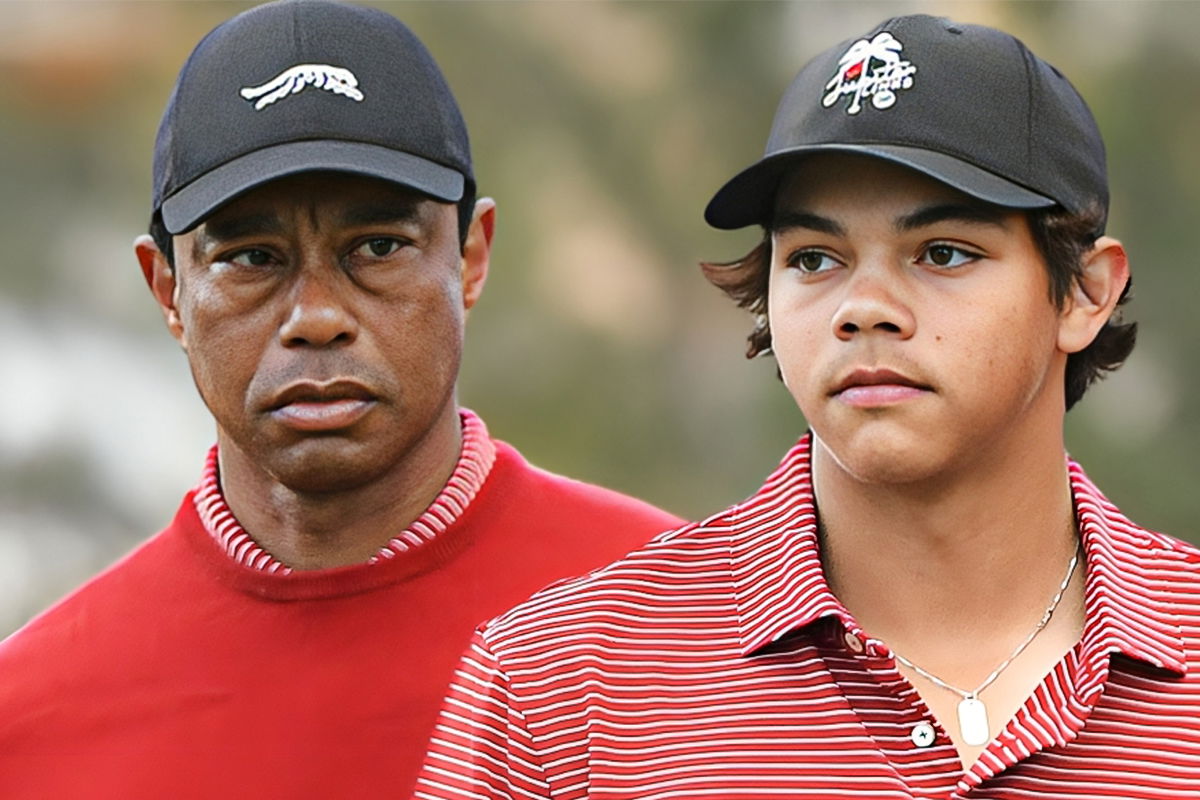
Imago
Credits: Imago

Imago
Credits: Imago
On August 31, when Charlie Woods had a hole-in-one in the final day of the Junior Players Championships, Tiger Woods‘ son achieved a rarity in golf that even seasoned professionals crave for with their years of experience. Charlie’s stunning hole-in-one at TPC Sawgrass also proves that Tiger’s unconventional teaching philosophy is practical. The 16-year-old drilled his iron shot from 177 yards on the par-3 third hole during the Junior PLAYERS Championship. Meanwhile, his playing partners watched in amazement as the ball found its way to the bottom of the cup.
This marks Charlie’s second career ace in less than a year. However, this achievement carries more profound significance than the celebration suggests. The success stems directly from Tiger’s controversial decision to put blade irons in his son’s hands from the very beginning. Tour pros Nick O’Hern and Mark Allen recently dissected Tiger’s teaching methods on their podcast. They revealed the fascinating details behind this approach. “Tiger Woods made his son play blades,” O’Hern explained. “And at junior level, that is a significant disadvantage.”
Charlie Woods ACE! 🚨
He cards a hole-in-one at TPC Sawgrass’ third hole during the Junior Players Championship! pic.twitter.com/IiiM0LIV9U
— Golf Digest (@GolfDigest) August 31, 2025
ADVERTISEMENT
The disadvantage becomes crystal clear in a competitive environment. Charlie hits his pitching wedge approximately 135 yards with Tiger’s traditional 49-degree loft. Other junior players routinely blast similar clubs 155 yards with modern, stronger lofts. Nevertheless, Tiger refuses to give Charlie the forgiving equipment that helps find the sweet spot.
“A horrible disadvantage to have,” Allen agreed during their discussion. Yet both pros understand the long-term brilliance behind this strategy. Tiger learned the same way from his father Earl, who used old equipment to teach fundamentals first. The results speak volumes about this methodology. Charlie jumped from No. 609 to No. 14 in the AJGA rankings this year. He also claimed his first AJGA victory at the Team TaylorMade Invitational in May. Additionally, he finished T9 at the Junior PGA Championship in July.
The blade iron approach forces Charlie to hit the ball perfectly every time. There’s no margin for error with unforgiving equipment. Consequently, he develops precision that forgiving clubs cannot teach.
ADVERTISEMENT
Top Stories
Rory McIlroy Suffers ‘Banana Peel’ Blunder as His Australian Open Setbacks Continue

PGA Tour Under Fire for Jeopardizing Careers by Cancelling Q-School Round at the Last Minute

Alex Noren’s Hot-Mic, Akshay Bhatia’s DOD & More: Top Moments From Hero World Challenge R2

Cameras Catch Rory McIlroy Lost in the Bushes Amid Disastrous Australian Open Round

Bryson DeChambeau Won’t Like the Penalty Kevin Kisner Wants LIV Golfers to Face on PGA Tour Return

Tiger Woods’s Equipment Vault Advantage
Tiger’s garage offers Charlie unprecedented access to golf history. “He’d have a lot of clubs in the garage to choose from,” the tour pros noted during their conversation. “You’re not happy with your putter and you just quickly wander into Dad’s.” The equipment collection reads like a museum inventory. Charlie can practice with putters that won 14 of Tiger’s 15 major championships. “There’d be 100 copies of the actual putter that won 14 of his 15 majors,” O’Hern observed.
ADVERTISEMENT
The advantages extend beyond historical significance. Tiger receives fresh wedges every tournament week on tour. Therefore, Charlie practices with the sharpest grooves imaginable. “Tiger gets new wedges every week in a tournament,” Allen explained. “So he’d have the sharpest grooves of all time.”
Charlie currently uses custom TaylorMade P7CW irons designed specifically for him. These clubs feature weight removed from the heel and toe sections. The modifications reduce overall head weight while maintaining blade characteristics. The precision engineering reflects Tiger’s commitment to proper fundamentals.
His putter tells another remarkable story. Charlie carries a backup version of Tiger’s legendary Scotty Cameron Newport 2 GSS. The putter features identical specs down to the cord grip and cherry bombs. Only the length differs to accommodate Charlie’s shorter stature. Tiger’s unconventional approach continues paying dividends. Charlie’s recent ace at TPC Sawgrass validates the blade iron philosophy. The shot required perfect contact and precise distance control—skills developed through years of unforgiving equipment.
ADVERTISEMENT
The teaching method prioritizes long-term skill development over short-term comfort. Charlie faces competitive disadvantages now but builds superior fundamentals for the future. His second career hole-in-one suggests Tiger’s patient approach is working precisely as planned.
ADVERTISEMENT
ADVERTISEMENT
ADVERTISEMENT

.png?w=50&h=50)
